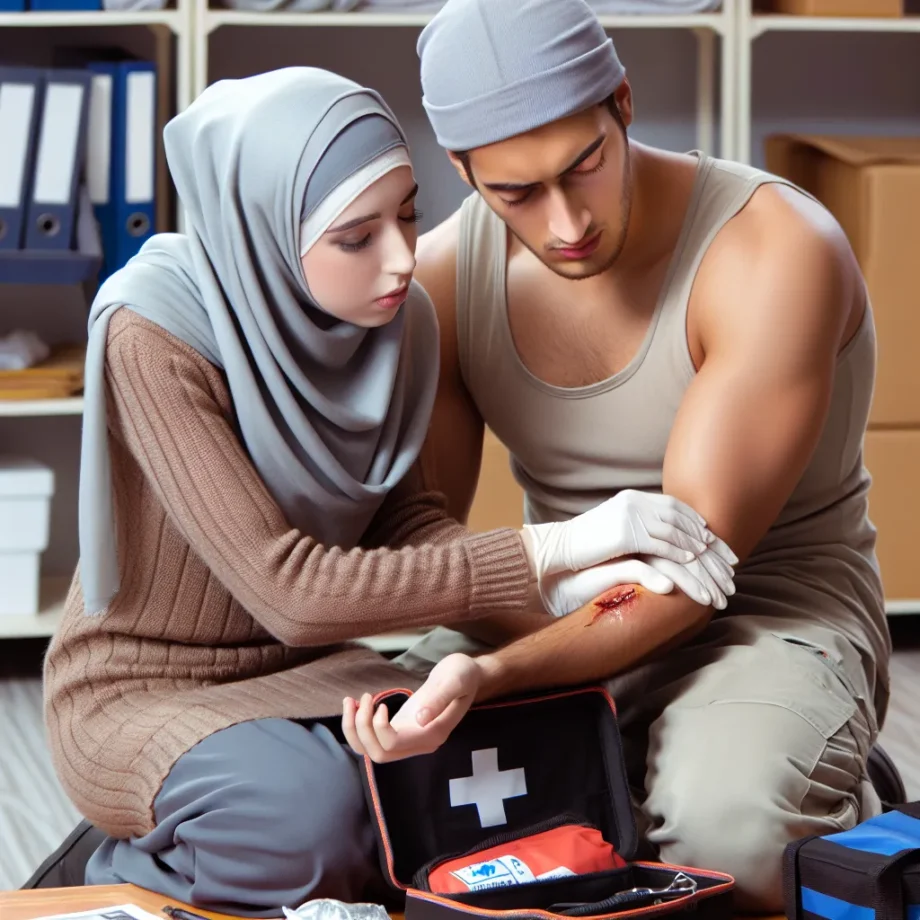Basic CPR steps that can save lives
Basic CPR (Cardiopulmonary Resuscitation) is a crucial skill that everyone should know, as it can save lives in emergency situations. The key steps in performing CPR include assessing the scene for safety, checking the person’s responsiveness, and calling for help. Once help is on the way, the next steps involve positioning the person on their back, opening their airway, and checking for breathing. If the person is not breathing or only gasping, CPR should be initiated immediately.
To perform CPR, start with chest compressions by placing the heel of one hand on the center of the person’s chest, placing the other hand on top, and interlocking the fingers. Compression should be at least 2 inches deep and at a rate of 100 to 120 compressions per minute. After 30 compressions, give two rescue breaths by tilting the person’s head back, pinching the nose, and giving two breaths to make the chest rise. Continue cycles of 30 compressions and two breaths until help arrives or the person shows signs of life.
Knowing basic CPR can significantly improve the chances of survival for someone experiencing cardiac arrest or other life-threatening emergencies. Proper training and regular practice of these essential first aid techniques are vital in being prepared to handle such critical situations effectively.
Treating common injuries and wounds
When it comes to first aid, knowing how to treat common injuries and wounds is essential for everyone. Whether it’s a small cut or a sprained ankle, being prepared to provide immediate care can make a significant difference in the outcome. One of the most important steps in treating a wound is to clean it thoroughly with soap and water to reduce the risk of infection. For minor cuts and scrapes, applying an over-the-counter antibiotic ointment can help keep the area clean and promote healing.
For more significant wounds, such as deep cuts or puncture wounds, applying direct pressure with a clean cloth or bandage can help control bleeding until medical help is available. It’s crucial to elevate the injured area if possible to further reduce blood flow. Additionally, being aware of the signs of infection, such as redness, swelling, or increased pain, is vital in ensuring proper treatment and recovery.
Understanding these essential first aid techniques and being prepared to apply them when necessary can make a difference in the outcome of common injuries and wounds. By staying informed and equipped with the necessary supplies, anyone can be ready to provide effective assistance in a time of need.
Recognizing and responding to medical emergencies
Recognizing and responding to medical emergencies is crucial for anyone to be prepared for unexpected situations. Understanding the essential first aid techniques can make a significant difference in providing timely and appropriate care to those in need. Whether it’s a minor injury or a life-threatening condition, knowing how to recognize the signs and respond effectively can save lives.
One of the fundamental skills is to recognize the difference between a minor injury and a medical emergency. Common signs of medical emergencies include difficulty breathing, chest pain, severe bleeding, sudden weakness or numbness, loss of consciousness, and seizures. If you encounter someone exhibiting these symptoms, it’s vital to act quickly and decisively.
Immediate response is key in handling medical emergencies. Calling for emergency medical help should be the first step in any serious situation. Whether it’s calling the local emergency number or instructing someone else to do so, quick access to professional medical assistance is critical. While waiting for help to arrive, administering basic first aid such as CPR for someone who is not breathing or performing chest compressions for someone with no pulse can significantly improve the chances of survival.
Furthermore, being able to provide accurate information to the emergency medical services dispatcher is essential. Clearly describe the nature of the medical emergency, the condition of the individual, and any other relevant details. This can help ensure that the appropriate resources and expertise are dispatched promptly to the scene.
In conclusion, recognizing and responding to medical emergencies is a skill that everyone should prioritize. By being prepared and knowing the essential first aid techniques, individuals can make a positive impact and potentially save lives in critical situations.
